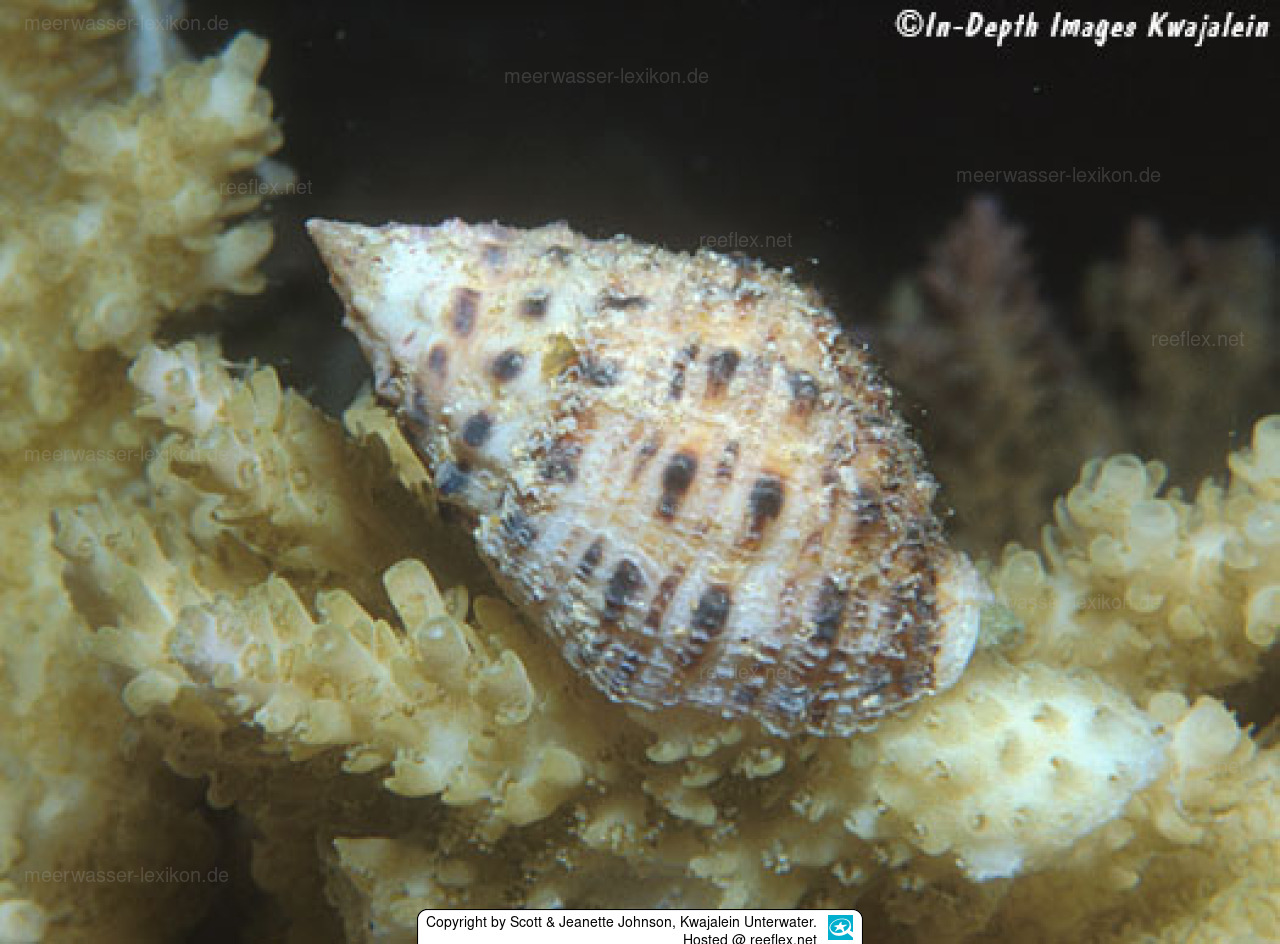Info
Drupella fragum is a widespread shell snail, which is parasitic, and that also gladly in large troops, on stony corals, particularly gladly on Arcopora, to find.
The snail is corallivorous, i.e. it feeds on coral tissue and coral polyps, it is able to destroy whole sticks by its continuous feeding activity, what remains is a dead calcareous skeleton.
These coral parasites do not stop at other coral genera, they seem to attack especially Acropora hyacinthus see report °Drupella outbreak in a large coral community off the coast of Cape Toi, Miyazaki, Japan°.
Healthy coral reefs withstand a certain feeding pressure from predators, but when the populations of parasites literally explode, see also the crown-of-thorns starfish (Acanthaster planci), even vital reefs suddenly have a very big problem, because the reefs in this critical state are additionally weakened by El Niño phenomena and human intervention (pollution, introduction of fertilizers, poisons, etc.).
Scientists are working on predicting mass explosions/plagues of the voracious snails through the use of specific antibodies, see the interesting report "Production of Specific Polyclonal Antibody against the Larvae of Corallivorous Gastropod Drupella fragum for Prediction of Outbreaks° (translated: Production of Specific Polyclonal Antibody against the Larvae of Corallivorous Gastropod Drupella fragum for Prediction of Outbreaks).
When buying new corals, please check the sticks and offshoots carefully and remove snails with the help of tweezers to avoid a possible spreading to existing corals.
Synonyms:
Drupa vitiensis Pilsbry, 1918
Drupella fraga (Blainville, 1832)
Purpura alba Hombron & Jacquinot, 1848
Purpura fragum Blainville, 1832
Ricinula dealbata Reeve, 1846
The snail is corallivorous, i.e. it feeds on coral tissue and coral polyps, it is able to destroy whole sticks by its continuous feeding activity, what remains is a dead calcareous skeleton.
These coral parasites do not stop at other coral genera, they seem to attack especially Acropora hyacinthus see report °Drupella outbreak in a large coral community off the coast of Cape Toi, Miyazaki, Japan°.
Healthy coral reefs withstand a certain feeding pressure from predators, but when the populations of parasites literally explode, see also the crown-of-thorns starfish (Acanthaster planci), even vital reefs suddenly have a very big problem, because the reefs in this critical state are additionally weakened by El Niño phenomena and human intervention (pollution, introduction of fertilizers, poisons, etc.).
Scientists are working on predicting mass explosions/plagues of the voracious snails through the use of specific antibodies, see the interesting report "Production of Specific Polyclonal Antibody against the Larvae of Corallivorous Gastropod Drupella fragum for Prediction of Outbreaks° (translated: Production of Specific Polyclonal Antibody against the Larvae of Corallivorous Gastropod Drupella fragum for Prediction of Outbreaks).
When buying new corals, please check the sticks and offshoots carefully and remove snails with the help of tweezers to avoid a possible spreading to existing corals.
Synonyms:
Drupa vitiensis Pilsbry, 1918
Drupella fraga (Blainville, 1832)
Purpura alba Hombron & Jacquinot, 1848
Purpura fragum Blainville, 1832
Ricinula dealbata Reeve, 1846







 Scott & Jeanette Johnson, Kwajalein Unterwater
Scott & Jeanette Johnson, Kwajalein Unterwater




